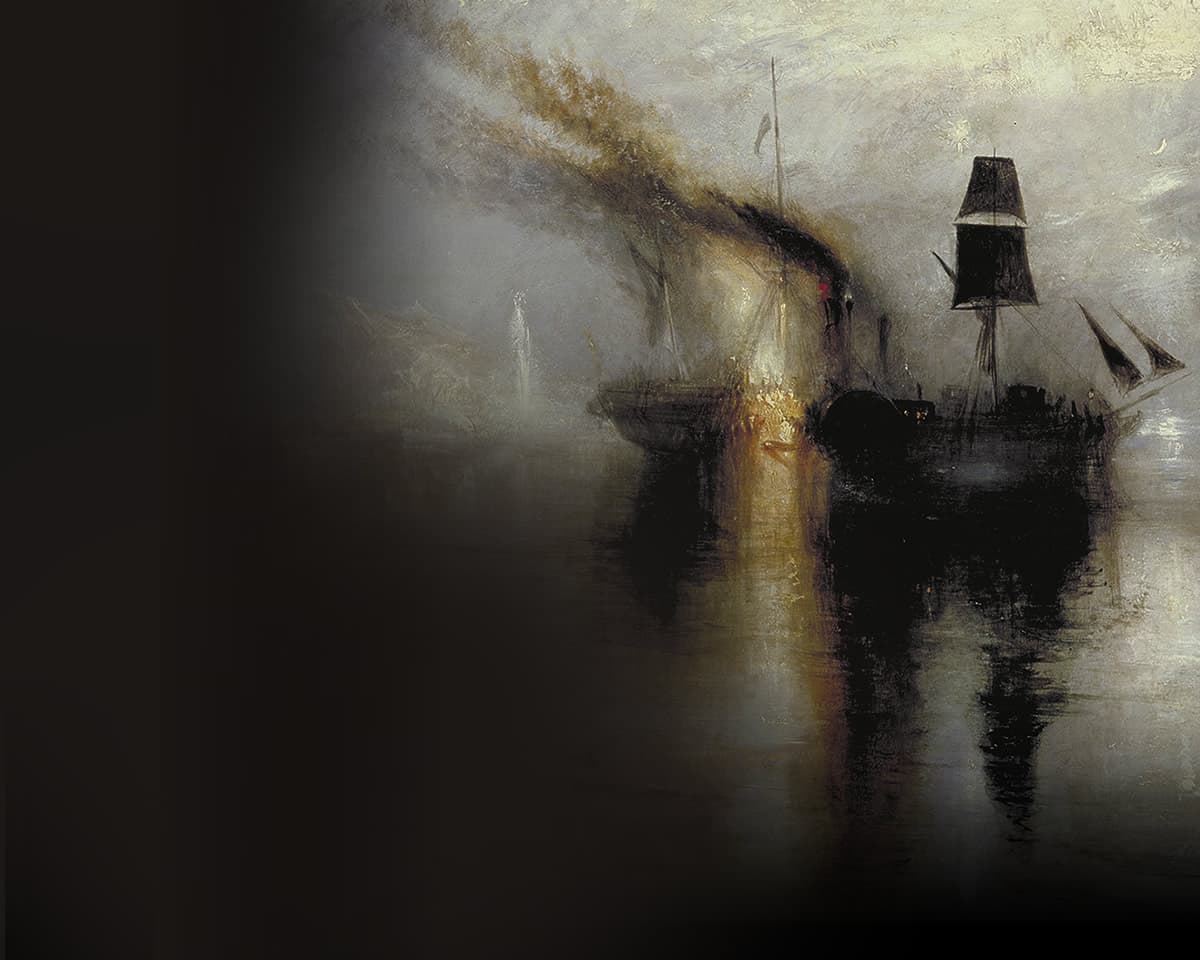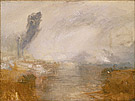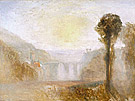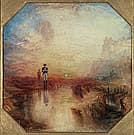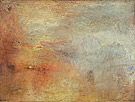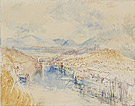Turner’s Late Works
From the late 1820s Turner’s paintings were routinely mocked, with critics vying to find yet more disparaging ways of describing his canvases. The artist was accused of using ‘cream, chocolate, yolk of egg, or currant jelly’. Others objected to his vibrant colours, describing his works as ‘freaks of chromomania’ that would be just as intelligible if hung upside down. But Turner retained loyal supporters. Indeed he attracted a champion in John Ruskin (1819–1900), whose book Modern painters (1843) forced a reappraisal of the ageing artist’s work.
During his later years Turner developed a practice of resolving many of his canvases once they were hung at the Royal Academy on Varnishing Day. While other artists only touched up their paintings on the walls, he would add details, or mischievously heighten the colour range to ensure his paintings were the most eye-catching. Many of the canvases now admired as distinctive ‘late work’ were probably left incomplete before such transformation took place. These radiant, atmospheric works are often regarded as precursors of Impressionism.
